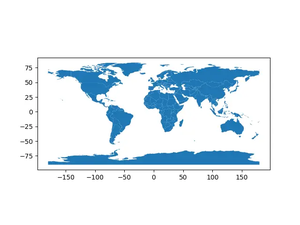Table of Contents
Overview
Pandas, the open-source data manipulation and analysis library for Python, offers a wide array of functionalities that simplify the task of working with structured data. In this tutorial, we delve into one of its powerful capabilities: calculating the cumulative product of numeric values within groups in a DataFrame. This operation is pivotal in numerous data analysis contexts, such as financial analysis, where one might need to compute the compounded return on investment over time within different asset classes.
Before diving into the examples, ensure you have Pandas installed:
pip install pandasBasic Concept of Cumulative Product
The cumulative product of a sequence of numbers is the sequence of their progressive multiplications. For example, given a sequence [1, 2, 3, 4], the cumulative product sequence would be [1, 2, 6, 24]. In Pandas, this is simply achieved with the cumprod() function.
Example 1: Simple DataFrame Cumulative Product
import pandas as pd
df = pd.DataFrame({'A': [1, 2, 3, 4]})
print(df['A'].cumprod())
Output:
0 1
1 2
2 6
3 24
Name: A, dtype: int64
Example 2: Groupwise Cumulative Product
Now, let’s apply this concept to groups within a DataFrame. Suppose we have a DataFrame with a column indicating categories or groups, and we wish to calculate the cumulative product within each of these groups.
import pandas as pd
df = pd.DataFrame({
'Group': ['A', 'A', 'B', 'B', 'C', 'C'],
'Data': [2, 2, 3, 3, 4, 4]
})
df['CumProd'] = df.groupby('Group')['Data'].cumprod()
print(df)
Output:
Group Data CumProd
0 A 2 4
1 A 2 4
2 B 3 9
3 B 3 9
4 C 4 16
5 C 4 16
Advanced Usage: Multi-Column Groups and Conditionals
Going beyond, you can perform more complex groupwise cumulative product calculations by incorporating multiple grouping columns and conditionals.
Example 3: Multi-Column Group and Conditional Cumulative Product
import pandas as pd
df = pd.DataFrame({
'Year': [2020, 2020, 2021, 2021, 2022, 2022],
'Group': ['A', 'A', 'B', 'B', 'C', 'C'],
'Data': [2, 3, 2, 4, 5, 6]
})
# Group by both 'Year' and 'Group', then compute cumprod
# only for groups in 2021 or later
mask = df['Year'] \\u003e= 2021
df.loc[mask, 'CumProd'] = df[mask].groupby(['Year', 'Group'])['Data'].cumprod()
print(df)
Output:
Year Group Data CumProd
0 2020 A 2 NaN
1 2020 A 3 NaN
2 2021 B 2 2.0
3 2021 B 4 8.0
4 2022 C 5 25.0
5 2022 C 6 150.0
Optimizations and Best Practices
When working with large datasets, computational efficiency becomes paramount. Employing appropriate grouping and leveraging Pandas’ inherent functions like cumprod() can markedly accelerate your operations. Be mindful of data types; casting numeric columns to types with lower memory footprints, such as int32 or float32, can further enhance performance.
Conclusion
Understanding how to calculate the cumulative product of groups in a DataFrame empowers data analysts and scientists to perform intricate data transformations with ease. Whether for basic aggregations or more complex, conditional groupwise calculations, mastering this technique unlocks a host of analytical possibilities in Pandas.
